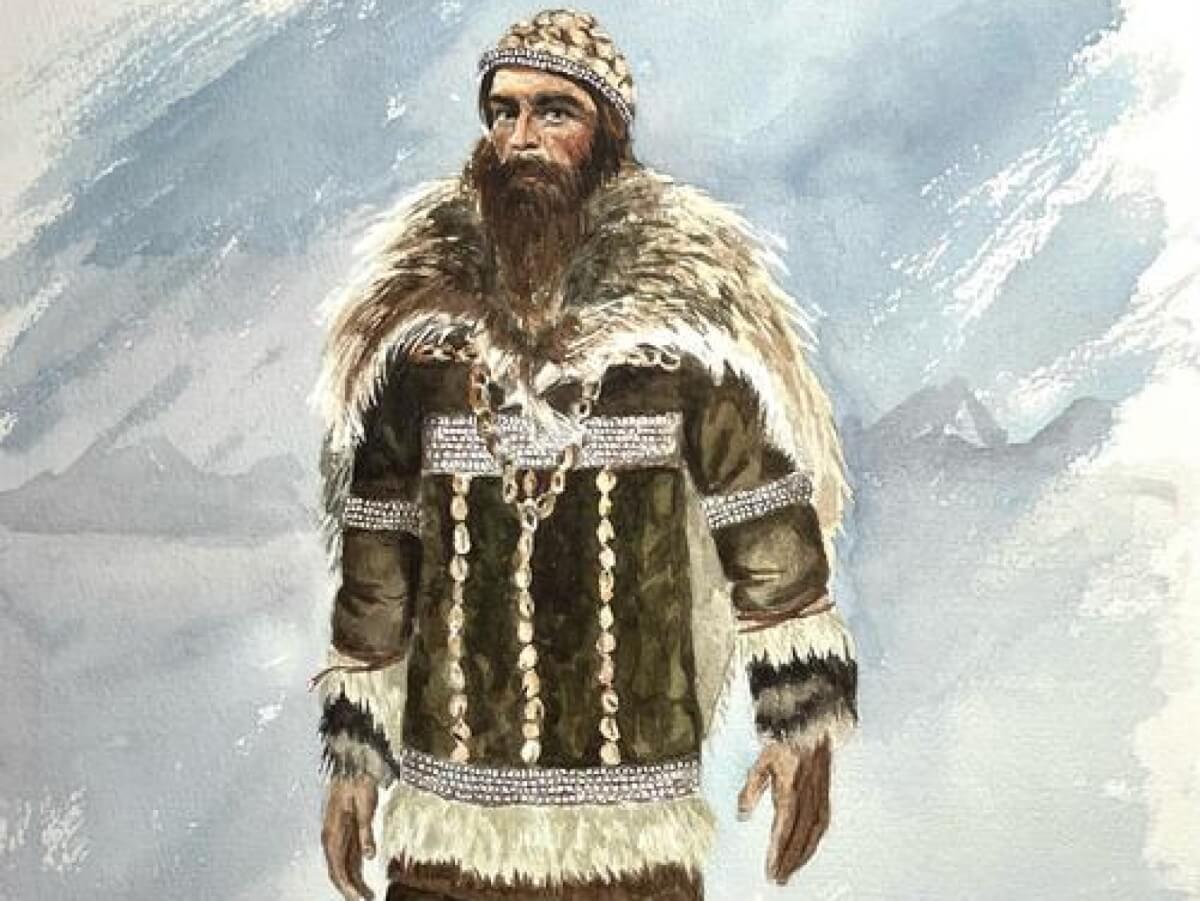Fashion
Researchers reveal how clothing evolved into a fashion statement 40,000 years ago

Artist impression of decorated tailored clothing in the Upper Paleolithic (image credit: Mariana Ariza)
SYDNEY — Forty thousand years ago, the world had its first fashionista. A study published in Science Advances is revealing how our human ancestors used to accessorize their clothing with eyed needle tools. The small adornments might not seem like much by today’s standards, but the choice marked a significant transition in how clothing is viewed. Garments were no longer a source of protection against the elements but a form of self-expression and cultural identity.
“Why do we wear clothes? We assume that it’s part of being human, but once you look at different cultures, you realize that people existed and functioned perfectly adequately in society without clothes,” explains Ian Gilligan, a professor of Archaeology at the University of Sydney in Australia, in a media release.
One question researchers answer is why people started using clothing to express themselves. The study shows that clothing became more than a physical necessity; it became a social necessity to become more desirable in group dynamics.


Trending: Eyed needles on prehistoric clothing
Eyed needles are among the most iconic artifacts from the Stone Age, with the earliest dating back 40,000 years from Siberia. Similar to bone awls, they are sharpened tools made of animal bone. Eyed needles contain a perforated hole to make threading into clothing easier.
Bone awls were already used to make tailored clothing, but eyed needles likely signified a change to making more complex and layered clothing (a must for surviving frigid Siberian winters). Along with eyed needles, the authors note our Paleolithic ancestors also accessorized with beads and other small decorative items.
“We know that clothing up until the last glacial cycle was only used on an ad hoc basis. The classic tools that we associate with that are hide scrapers or stone scrapers, and we find them appearing and going away during the different phases of the last ice ages,” Dr. Gilligan says.


The evolution of clothing explained
According to the authors, clothing became a new way for people to express themselves. Traditional decoration methods such as body painting or intentional scarring were not feasible in the last Ice Age since people always wore clothes to stay warm.
Clothing represented a need for protection and comfort against frigid weather. It slowly morphed into a social necessity as different communities moved to colder climates, and shared clothing styles helped people identify members of their own tribe. Knowing who was in your tribe and who wasn’t determined how willing another person would be to cooperate with you. Overall, adorning unique symbols or decorations on clothing provided individual expression and strengthened a group’s cultural identity.
“We take it for granted we feel comfortable wearing clothes and uncomfortable if we’re not wearing clothes in public,” Dr. Gilligan concludes. “But how does wearing clothes impact the way we look at ourselves, the way we see ourselves as humans, and perhaps how we look at the environment around us?”










